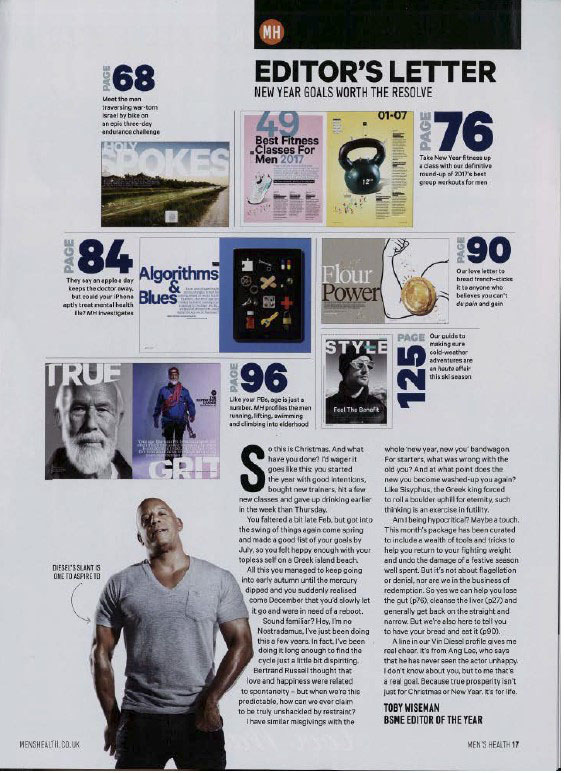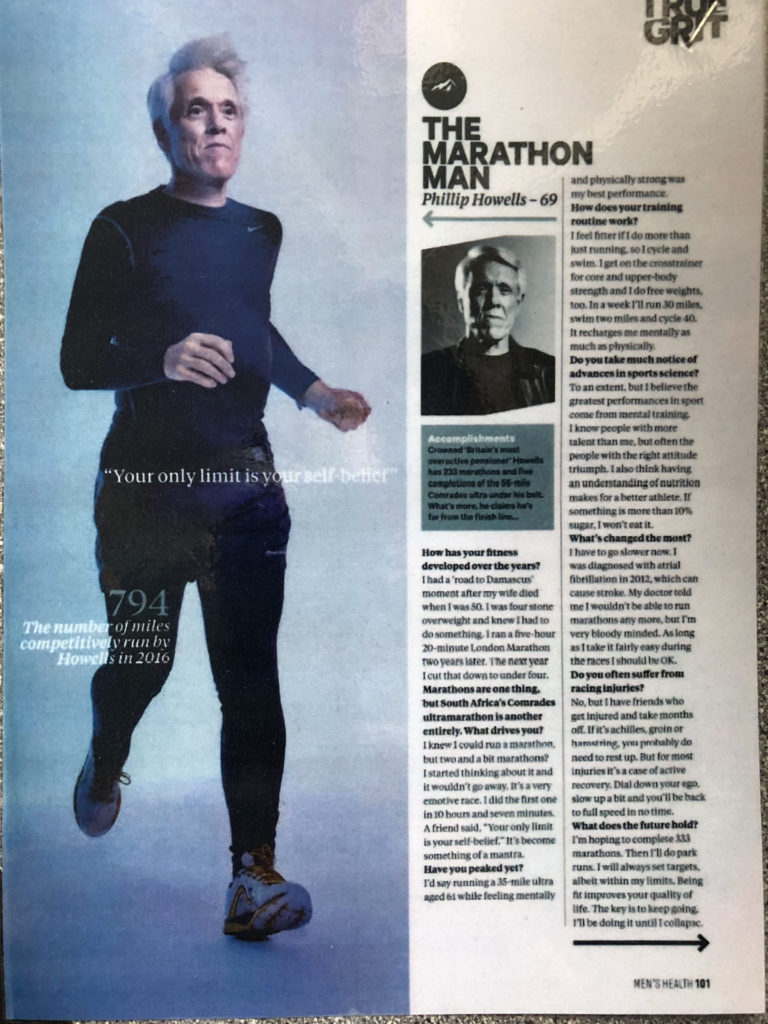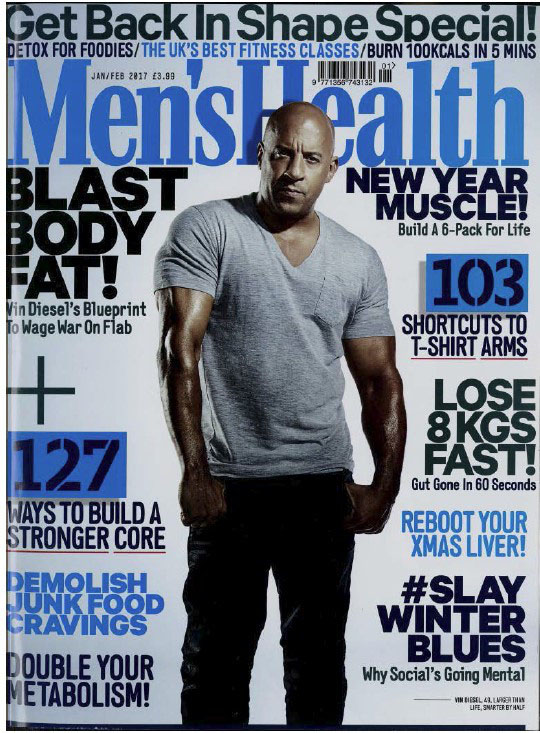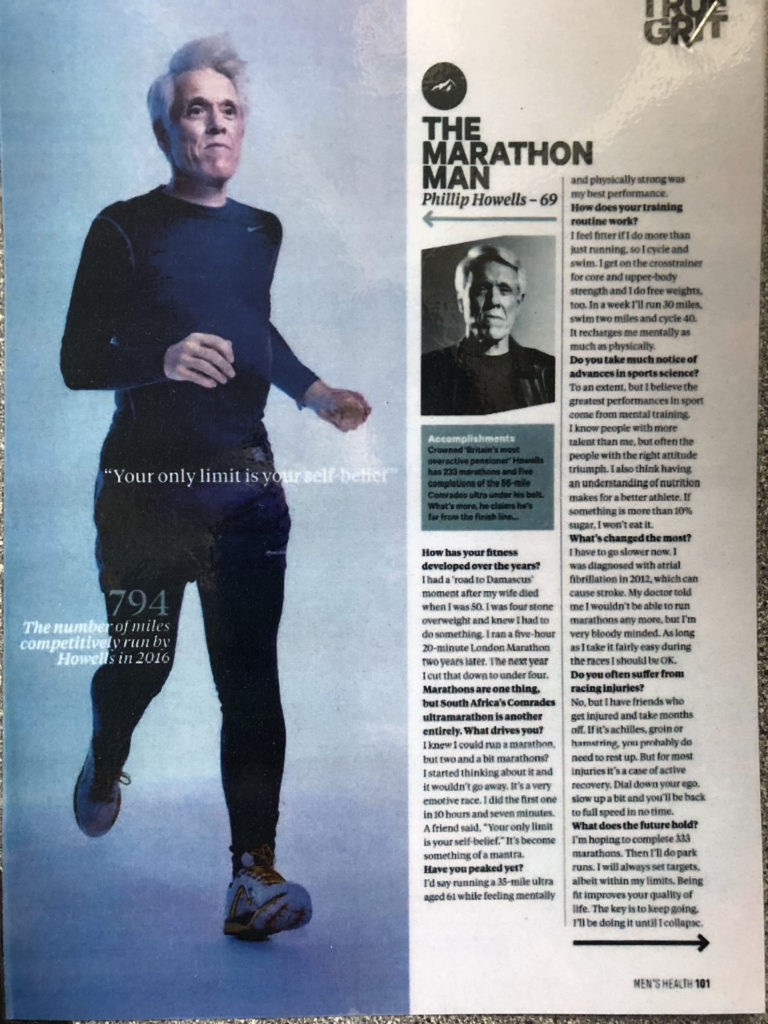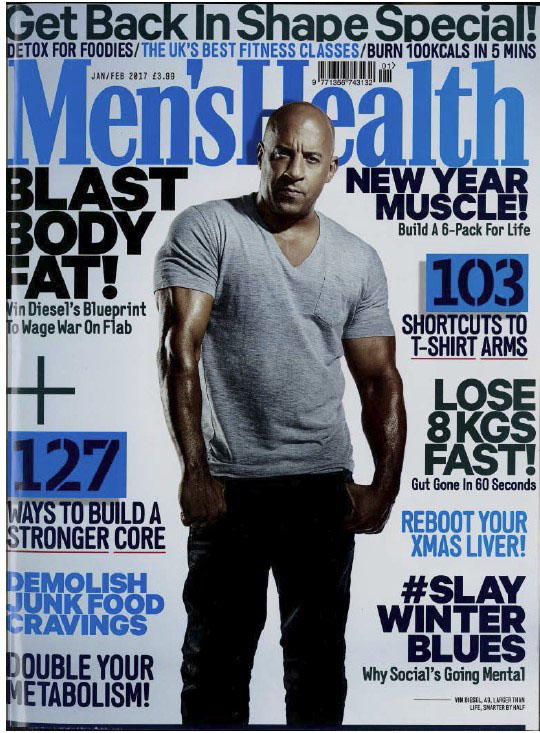Men’s Health – Jan/Feb 2017

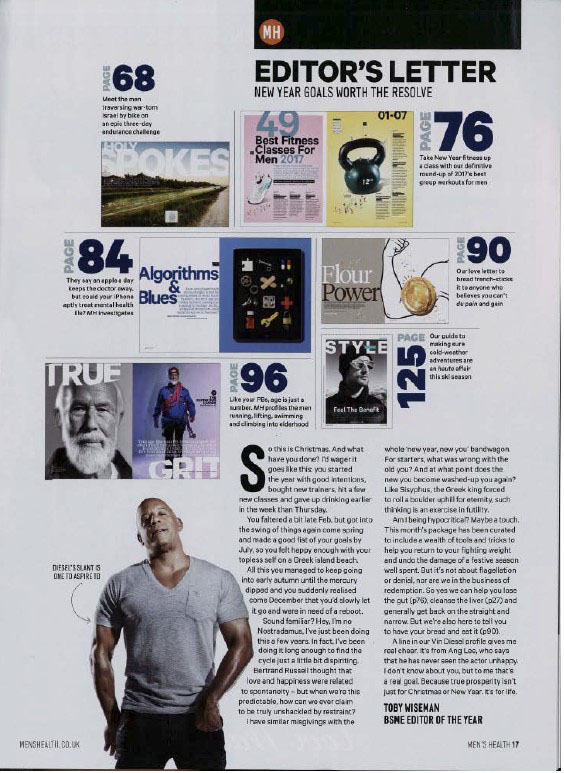
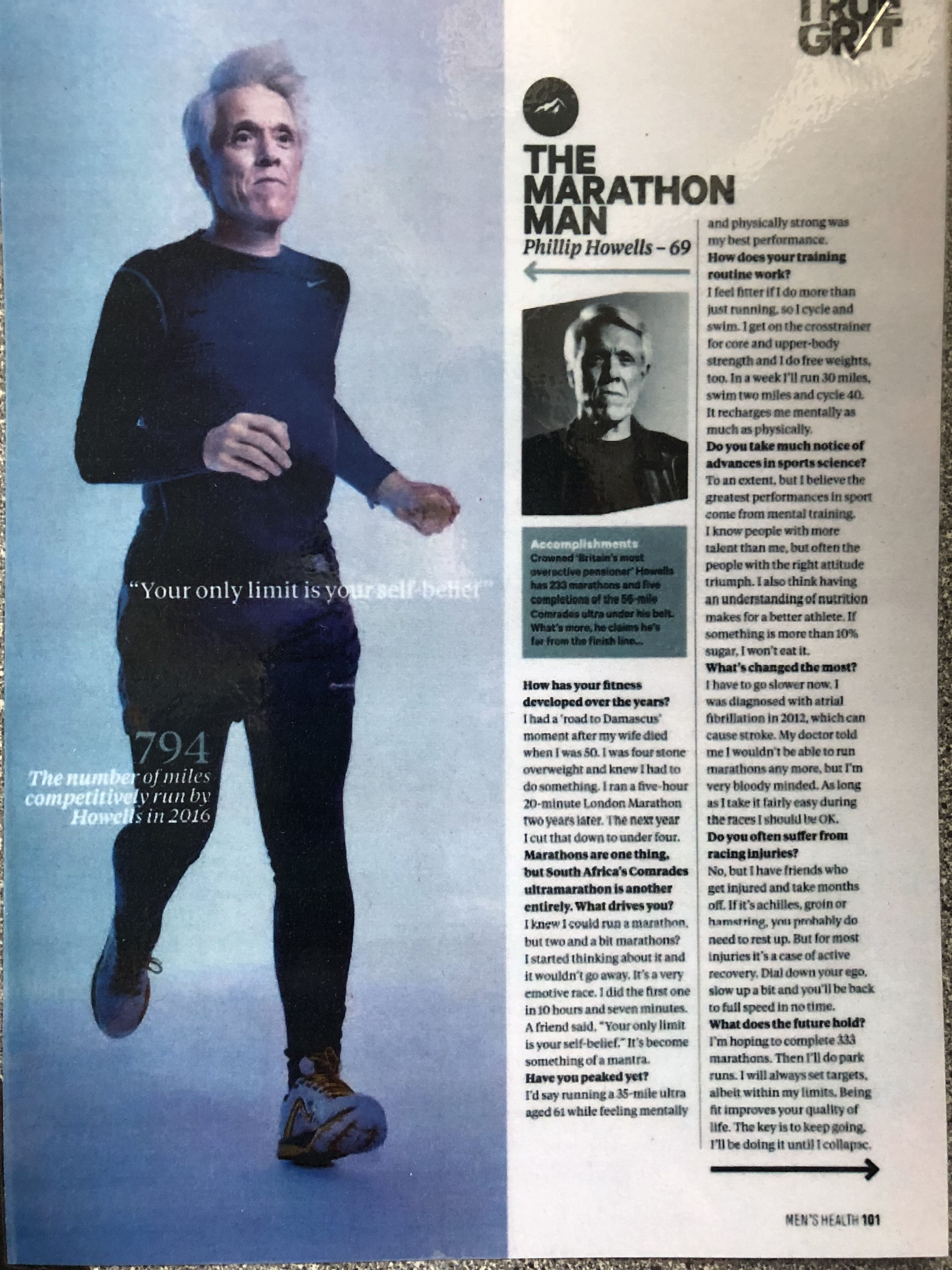
| LANGUAGE | SEMIOTICS Dominant signifier: Vin Diesel – ready made audience, attracts fans reactionary/stereotypical representation of a man: dominant stance, muscles on show, symbolic sign, blue and black font: colour associated with male gender, connotes to manliness, signifies topic of magazine genre anchorage indexical signs, headlines about losing weight, going to the gym, dieting etc…: highlights conventional elements of what it is to be ‘manly’, also provides anchorage as to what is in the magazine, attracting implied audience genre is lifestyle magazine (aimed at men’s lifestyle) – all paradigm of signs which connote to the idea of manliness/masculinity – fulfilling genre expectations according to Neale ( genre is structured around a repertoire of elements, which attracts audience based on their predictable expectations) indexical signs ‘burn’, ‘blast’, ‘demolish’, ‘slay’, ‘wage war’: semantic field of aggression/violence symbolic sign, big bold font: signifies aggression and masculinity NEALE He argues genre is is a mechanism which attracts audience based on their predictable expectations He suggests that each genre is structured around a repertoire of elements, which fulfil an audiences expectation of a film and creating enjoyment MH is a lifestyle magazine directed at men conventional elements of the genre include: working out tips (28-29), healthy recipes(32-33), tips on grooming (44), etc… these elements attract the target audience – a male audience interested in improving their lifestyle |
| REPRESENTATION | The School of Life present a video called ‘How to be a Man’ – this presents the ‘cool’ man, and the ‘warm’ man. whilst this is not an academic theory, it is still possible to apply these representations in Men’s health: ‘Meet the men traversing war-torn Israel by bike on an epic three day endurance’ – portrays cool man GAUNTLETT suggests that identity is not fixed – instead is fluid, constructed, negotiated and/or collective MH different versions of masculinity are presented: – front cover shows stereotypical alpha male – page 6-7 shows stereotypical classy businessman – page 130-131 shows active/athletic/adventurous man – page 101 shows the unconventional older runner by using multiple representations MH can appeal to multiple audiences at once BUTLER claims that gender is stylised by a series of repetitional acts there are stereotypical acts which make you female – wearing makeup – and stereotypical acts which make you male – playing football – and by repeating these acts on a regular basis you can construct your gender identity MH clearly presents a stereotypical masculine identity through the ideas it represents – front cover depicts stereotypical muscley alpha male who – pg 6 depicts stereotypical hardworking/punctual businessman – pg 128 depicts stereotypical adventurous/risk-taker male this allows the magazine to feel relatable for other stereotypical male readers GILROY claims that colonialism is still present in media today through lack of representation of ethnic minorities whilst MH doesn’t directly marginalise these minorities, their lack of representation of them highlights a post-colonialist ideology as it implies that the ethnic majority are more worthy and significant there are some representations of the black community etc – eg page 25 however most representations are focused primarily on the white community – eg page 2, 6, 18, therefore creates a misrepresentation which does not embrace other ethnicities |
| AUDIENCE | LASSWELL hypodermic needle theory/linear model of communication passive consumption receiver simply accepting a message being given to them, rather than engage with it SENDER: Hearst communications/Mens Health MESSAGE: providing men with the tools to improve and control over their physical, mental, and emotional lives MEDIUM: print/online lifestyle magazine RECIEVER: men wanting to improve their lives, women buying for husbands/boyfriends etc… EFFECT: to buy the magazine and make money for Hearst LAZERFELD two step flow of communication active consumption media messages are filtered through influential opinion leaders who interpret a message first and then relay it back to the mass audiences Vin Diesel acts as the opinion leader, promoting the magazine and the ideas being portrayed – getting healthy, getting fit, improving life – to make people want to buy the magazine and make Hearst money. people are more likely to buy the magazine if someone they look up to promotes it MCQUAIL AND BLUMLER uses and gratifications active selection recognises the decision making process the audience take, highlighting how they seeking specific uses and gratifications when consuming media audience may want to EDUCATE themselves on how to get fitter/healthier/better their lives audience may want to IDENTIFY with ideas presented top them or seek a new IDENTITY – a healthier identity audience may want to be ENTERTAINED by the magazine through interviews etc |
| INDUSTRY | started in 1986 by Mark Bricklin largest men’s magazine brand – 35 editions in 59 countries, best selling men’s magazine on US newsstands quarterly magazine 1988 began selling subscriptions consumer magazine – general men’s lifestyle won both Editor’s Choice and Reader’s Choice for the 2016 Hot List average circulation per issue: 89,811, 74% from paid subscriptions (dec 2021) Men’s Health magazine had an average monthly reach of around 1.8 million individuals in the United Kingdom from April 2019 to March 2020 between Nov 2021 and Feb 2022: 9M print audience, 16.5M social media followers average reader is male with a media age of 44.7 and an income of over $92,000 result of rise in digital media: circulation high of 228,000 in 2008, dropped to 160,000 in 2016 adapted through introducing online version and social media – 4.5m twitter followers (oct 2022) Women’s Health was founded in 2005 as a branch of Men’s Health currently has a higher circulation than Men’s Health – 96,350, (dec 2021) in 2018 – owned by global publishing conglomerate HEARST UK – bases in NYC, ownes newspapers, magazines, TV channels, Tv stations, owns 50% of the A&E Networks cable network group and 20% of the sports cable network group ESPN, both in partnership with The Walt Disney Company Hearst UK brands reach 30% of UK men and 25% of UK women They sell over 4m magazines a month and have 17m UK digital unique users 2016, revenue $10.8B publishes over 20 magazine titles: Cosmo, Elle Hearst describe the brand as a “lifestyle manual for modern men” HESMONDHALGH claims the ‘cultural industries are a risky business’ – audiences tastes are continuously adapting making predicting their needs very difficult to avoid this risk he claims major cultural organisations create products for different industries in order to maximise chances of commercial success – evident with regards to Hearst as they own multiple companies in multiple sectors – of one fails, they will still have other assets star formatting is another way of reducing risk as it attracts a ready made audience – evident through the use of Vin Diesel on the front cover and a 6 page article about him – fans of diesel will be urged to buy the magazine CURRAN & SEATON highlights how the media landscape has fallen under the control of a small amount of global media conglomerates and how this type of ownership creates a lack of diversity for audience consumption MH health is owned by global media conglomerate Hearst who owns 20+ magazine titles arguable to maximise profits however creates lack of diversity for audience as all names are owned by the same company, representing the same ideas |
| CONTEXT | impact of digital media on magazine industry: Print sales fell by 42% from 23.8m to 13.9m between 2010 and 2017. Back in 2000, sales were over 30m – signalling a 55% decline in just 17 years. Advertising in consumer magazines has fallen from £512m in 2010 to £250m in 2017. Google and Facebook now dominate online advertising (they account for 65% of the UK digital ad market). As a result of these changes, many magazines have closed. |
In a digital world, print magazines have little appeal.
To what extent do you agree with this statement?
You should refer to the magazine Men’s Health
- ownership of MH – hearst, owns 20+ mag labels
- average reader of MH – male, 45, $92,000+
- circulation and drop in circulation since digital world – dropped by 68,000 in 2016
- drop in circulation in mag industry as a whole – sales fell by 42% between 2010 and 2017
- how they combat the drop in demand for print – interactive website and social media, appeals to contemporary audiences
- hesmondhalgh – Hearst as they own multiple companies in multiple sectors – of one fails, they will still have other assets, 20+ magazines and owns 50% of A&E Networks
- —————————————————————————————————–
- Neale – genre is used to attract and maintain audience – lifestyle mag working out tips (28-29), healthy recipes(32-33), tips on grooming (44) – fulfilling audiences expectations
- links to Blumler’s uses and gratifications – people read the magazine to seek education and identity
- —————————————————————————————————–
- Gilroy postcolonialism – post colonial ideology is still present in modern representations – whilst does not marginalise ethnic minorities there is certainly a lack of them – creates mis represntation
- links to halls reception theory -audience will decode messages people of ehtnic majority will have a dominant response where as those in the ehtnic minorty will have an oppositional response possible effecting readership and sales
Oh Comely – Issue 35

| LANGAUGE | front cover: indexical signs: ‘Comely’ – attractive but not in a de-humanising way ‘power…poise…hard-won…strong’ – unconventional way to represent women dominant signifier: close up – unconventional way to represent women, less of a focus on her body, humanising rather then dehumanising androgynous/natural looking – rather than heavy makeup and glamourous clothing gazing directly at the reader – sense of power PG 52, 53 ‘fierce campaign’…’an unstoppable force’…’a Sister of which we can be collectively proud’ NEALE He argues genre is is a mechanism which attracts audience based on their predictable expectations He suggests that each genre is structured around a repertoire of elements, which fulfil an audience’s expectation of a film and creating enjoyment Oh! is a female lifestyle magazine aimed at women, however, is more unconventional; instead of portraying glamour, diet tips, fashion, makeup it focuses on the underrepresented aspects of female identity such as feminism, gender, body positivity, ethnic minorities |
| REPRESENTATION | HOOKS intersectionality – draws attention to lack of female representation in media and more specifically representation of black women, this could create misrepresentations of the black community or other ethnic minorities, as if they are not worthy of note Oh! does represent the black community on pg56 – Deanna Rodger a Jamaican-Scottish Brit is indexical signs ‘fearless’ and ‘mentor’ portrayed as powerful – radical representation of women ZOONEN feminist theory – suggests the over sexualised presentation of female’s bodies in media is a core element of western patriarchal culture, this creates a misrepresentation of how women portray themselves as she argues it is the media where people get most ideas about gender Oh! contradicts this theory as the front cover portrays a woman who is presented as more androgenous, wearing subtle, natural makeup, who lacks any element of sexualisation she is also gazing directly as the camera, rather than the camera ‘gazing’ at her she is portrayed as powerful and more than just her body – unconventional way to represent women GAUNTLETT identity – suggests identity is not fixed and instead is constructed, fluid, negotiated, collective, people make individual decisions about who they are, media heavily affects this Oh! presents many different identities for people to construct, negotiate, collect, adapt: the female Somali activist, the Jamaican-Scottish poet, the plus size body positivity blogger, former refugee, the women in the tech industry, |
| AUDIENCE | editorial staff listen to suggestions posted online “We have made a lot more of an effort with diversity in the magazine because we have quite a lot of readers in the aftermath of BLM demonstrations raising that with us,” says Sykes. “It’s so important to listen to the recommendations of your readers.” targeted affluent young women who wanted a “stylishly presented” alternative to the cheap aesthetic of mainstream magazines average reader, age 27, female (98%), HALL reception theory – media producers encode specific messages in product in hopes of audience decoding the message have the intention of the audience absorbing/accepting a specific idea Oh! represents many different people of many different backgrounds and ethnicities Preferred reading – females, the ethnic minorities who are not typically represented in media MCQUAIL AND BLUMLER uses and gratifications – recognises the decision making process of theory audience, highlighting how they seeking specific uses and gratifications when consuming media audience may seek to EDUCATE themselves on the type of issues portrayed EG – body positivity (55), refugee crisis (56), female right exploitation (53) and how all of these issues are being battled audience may seek to gain or explore personal identity EG – becoming more body confident (55), gender (101-105) |
| INDUSTRY | women’s lifestyle magazine – a “mindful magazine with a fresh perspective” published by Iceberg press, independent publishing company – ‘Iceberg exists to do things differently’ make two magazines – The Simple Things and Oh Comely – and also sell many other magazines via Pics & Link (online news stand) clever use of its digital resources – eclectic blog on The Simple Things website, newsletter, social media Pics & Ink grew during lockdown by 500 per cent, with 150 magazines, covering everything from coffee to cycling, now on board during lockdown there was a demand for niche magazines £5 in a few newsagents, independent retailers, cafes and museums also a subscription service available – £14 for six months (3 issues) the magazine was impacted by the pandemic and the final issue was published in September 2021 HESMONDHALGH claims the ‘cultural industries are a risky business’ – audiences tastes are continuously adapting making predicting their needs very difficult to avoid this risk he claims major cultural organisations create products for different industries in order to maximise chances of commercial success – evident with regards to Hearst as they own multiple companies in multiple sectors – if one fails, they will still have other assets evident in Oh! as being owned by an independent company who does not own a large portion of media products meant that the magazine went out of business in 2019 CURRAN & SEATON concerns how the media landscape has fallen under the control of a handful of global media conglomerates – creates a lack of diversity contrastingly, Oh! is owned by an independent company which only creates one other magazine meaning the magazine has the space to be as diverse as possible, as in its ideologies/representations etc wont blend in with other magazines |
| SOCIAL AND CULTURAL CONTEXTS | a development in lifestyle and environmental movements of the early twenty first century which rebrand consumerism as an ethical movement. Its representation of femininity reflects an aspect of the feminist movement which celebrates authenticity and empowerment |
Media products often challenge the social and cultural contexts in which they are created.
To what extent does an analysis of Oh Comely support this view?
- Oh! challenges the social and cultural contexts which it is created in – it is unconventional in its productions process, genre, and representations
- —————————————————————————————————–
- Unconventional magazine in its production – independent company Iceberg Press, contrasting C&S’s belief that the media landscape has fallen under the control of a handful of global media conglomerates, creating a lack of diversity – IP only produce two magazines giving them the aptitude be as diverse and unique as possible
- —————————————————————————————————–
- unconventional of its genre – NEALE – female lifestyle magazine ‘mindful magazine with a fresh perspective, instead of presenting ideas about fashion, diets, unattainable beauty etc it focuses on feminism (53), politics (56), gender(101-105), body positivity (55)
- links to MCQ&B – audience may seek to EDUCATE themselves on the type of issues portrayed or audience may seek to gain or explore personal identity
- —————————————————————————————————–
- unconventional in the way it represents female beauty – VAN ZOONEN – front cover portrays the dominant signifier – a woman -who is presented as more androgynous, wearing subtle, natural makeup, who lacks any element of sexualisation she is also gazing directly as the camera, rather than the camera ‘gazing’ at her, she is portrayed as powerful and more than just her body – challenges mainstream beauty ideals
- unconventional in the way it represents ethnic minorities – HOOKS – Samali feminist activist (53), described as ‘fierce’ and an ‘unstoppable’ force’, represents a female member of the black community challenges social and cultural expectations of women as emotional and passive, instead she is portrayed as powerful
- —————————————————————————————————–
- links to to Hall – by creating representations of women that are closer to reality audiences can understand themselves more – eg pg101-5 – dominant reading – transgender people may feel empowered by this representation, negotiated reading – people comfortable in their biological gender cannot relate to their experience but can appreciate it










